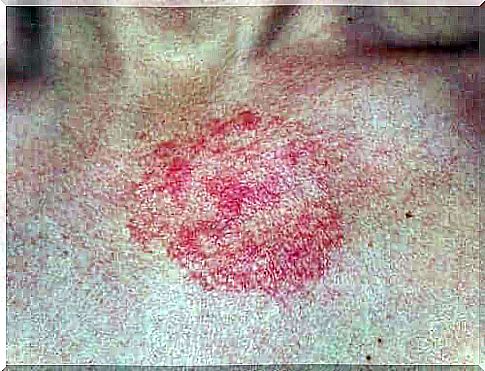Betamethasone: Uses And Adverse Effects

Betamethasone is a drug that belongs to the group of corticosteroids, also called corticosteroids or cortisone. They are synthetic glucocorticoids with immunosuppressive and anti-inflammatory effects. Topical betamethasone derivatives are used as anti-inflammatory drugs in the treatment of dermatoses that respond to corticosteroids.
What are the indications for betamethasone?

Due to its immunosuppressive effects, betamethasone is used to treat symptoms caused by a sudden drop in corticosteroid levels in the body. It works by decreasing the release of substances that cause inflammation. Therefore, it is useful in diseases that cause excessive inflammation.
Indications for betamethasone include:
- Primary or secondary insufficiency of corticosteroids in the body, such as Addison’s disease .
- Shock situations caused by hemorrhage, trauma or severe infection.
- Asthma.
- Rheumatic diseases.
- Ulcerative colitis.
- Corticosteroid-responsive dermatoses such as exfoliative dermatitis, urticaria, erythema multiforme, or severe psoriasis.
- Eye diseases: severe acute and chronic inflammatory and allergic processes, such as allergic conjunctivitis, keratitis, allergic marginal corneal ulcers, or ophthalmic herpes zoster.
How is it used?
Betamethasone is marketed in different forms of oral, parenteral and topical administration. The appropriate dose of this corticosteroid is different for each patient, and the professional will adjust it according to the disease to be treated.
Topical preparations are administered by applying a thin layer of the product to the area to be treated. However, intralesional administration is indicated for the treatment of keloids, chronic lichen simplex, lupus erythematosus or alopecia areata.
Remember that you should avoid stopping treatment abruptly, especially when it is prolonged, as corticosteroid withdrawal syndrome may arise. The symptoms that may appear are:
- General malaise.
- Muscle weakness and pain.
- Anorexia
- Nausea and vomiting.
- Fever
- Breathing difficulty.
- Drop in blood pressure and blood glucose.
Contraindications and precautions for the use of betamethasone

Contraindications to the use of betamethasone include:
- Corticosteroid allergy.
- Systemic fungal infection.
- Administration of live or attenuated virus vaccines.
- Injections into unstable joints, infected areas or intervertebral spaces.
On the other hand, special care must be taken when using betamethasone if you suffer from illnesses such as:
- Bone pathologies.
- Stomach or intestinal ulcer.
- Diabetes mellitus.
- Heart, liver or kidney disease.
- Glaucoma.
- Thyroid problems.
Lactation
Regarding the use of betamethasone during breastfeeding, there are data that indicate that the amount that passes into milk can be significant. Therefore, in prolonged treatments, it is advisable to use corticosteroids that are scarcely passed into breast milk.
However, it is compatible with breastfeeding as long as it is used occasionally and in short treatments. Even so, in these cases, milk production must also be monitored.
When betamethasone is used in labor, this drug can delay the letdown of milk and decrease the amount during the first week.
Betamethasone adverse reactions
Short-term treatments generally do not cause adverse reactions. However, long treatments can lead to atrophy of the adrenal glands.
When betamethasone is administered topically, it can cause adverse reactions. If they persist or are intense, it is necessary to consult a specialist.
As adverse reactions, they can appear:
- Burning.
- Itch.
- Irritation.
- Redness.
- Unwanted hair growth.
- Changes in skin color.
However, there are other symptoms that may appear, such as severe hives, redness, swelling or signs of skin infection at the application site.
When betamethasone is applied topically to children, there is an increased risk of side effects, including retarded growth and weight gain.
At the systemic level, in prolonged treatment, the intensity of the associated adverse effects increases with the dose, as well as the duration of the same.
Some of the side effects that may appear after oral or parenteral administration of betamethasone are:
- Swollen eyes.
- Respiratory problems.
- Increased frequency of urination.
- Thirst increased.
- Dark colored stools.
- Changing the view.
Conclusion
Betamethasone is a corticosteroid used primarily topically. It is used to treat discomfort caused by various skin problems. It is important to always follow the specialist’s instructions.







